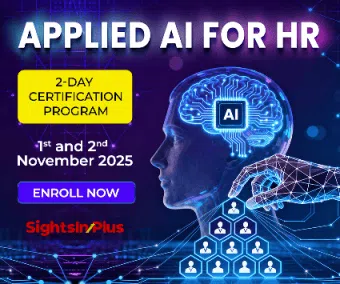Backdrop
Our workplace comprises of diverse workforce and individual requirements, aspirations, focus areas are varied. Now, with the COVID-19, stress levels are rising as the compulsions of a distributed workforce lead to a sense of disorientation, disconnection, disempowerment, and isolation. Workplace anxiety is leading to increased attention on well – being and sustained measures.
At ITC Infotech, our Employee Value Proposition (EVP) aims to create a safe work environment and Total Rewards policies founded on Employee Centricity that are market aligned, affordable and which can be sustained and offered over a period of time. It believes in a wholesome Employee Wellbeing approach focused on the Physical, Financial, and Mental & Emotional aspects.
Employee Centricity and Moments of Truth
Three key pillars of business strategy at ITC Infotech are Customer Centricity, Employee Centricity, and Operational Excellence. We keep employee experience at the center of any of the people initiatives that we implement. This means building an agile workforce, establishing and simplifying processes and leveraging technology across all employee initiatives. Our initiative to build a personalized digital buddy as part of our ongoing automation program is an example of this.
Employee centricity is measured through the Moments of truth (MoT). The 9 stages that we have defined are the critical incidents or stages in the employee life cycle which can build or impact employee’s perception of the organization. These 9 MoTs are like the Net Promoter Score (NPS) pertaining to employee centricity. Similar to NPS, the MoTs can determine if: a) Employees have a psychological bond with the organization and b) whether employees choose to be promoters or detractors of the organizational brand.
The 5th and 6th MoT are Total Rewards Decisions and Flexibility & Predictability | Wellbeing | Navigating Through Life Situations
Employee Benefits – Way Forward
Total Rewards and Employee Well being are two key MoT’s as outlined above. We are relooking into our benefit offerings across all the 15 countries we operate in and are ensuring that they align with organization principles and rewards philosophy – Competitiveness, Commonality in the offering and Cost optimization.
- Competitiveness: Having benefits which are aligned to market benchmark and ensuring ability to attract and retain talent.
- Commonality in the offering: Ensuring the benefits offered such as group medical insurance covers all employees in each of the countries, we operate under a single company offered a plan and also align to local government requirements.
- Cost Optimization perspective: Evaluate multiple offerings including the perspective of long-term sustainability. The key is to leverage internal technology platforms and ways to build on the employee experience on benefits and well-being while carefully evaluating the “perceived value” of external options that have a cost implication.
Below are few examples of how we are aligning to a more mature employee benefits offerings which are aligned with our organization principles and rewards philosophy.
- From medical insurance perspective, employees now have a choice to top up on both company sponsored medical insurance plan as well as on the voluntary coverage as well. In addition, any benefits which we believe is industry unique and we believe they align to our organization principles we continue to offer them. An example is Paternal leave which is provided in case of untimely death of the mother as the primary care giver on maternity. Then the father becomes eligible for leaves in the capacity of the primary care giver capacity in line with Maternity leave policy.
- In certain geos, Medical insurance premium costs were 100% borne by employer and had no choice in plan offerings. Again, in alignment with organizational principles and rewards philosophy, we are now offering 3 plan choices for employees to enroll into and there is some amount of premium cost which employees bear, though the amount being very minimal. This change is driven in alignment with organization & rewards principle of competitiveness and cost optimization.
- In certain identified geos, wherein employees were managing their own insurance plans and reimbursed, we moved them to Company provided medical insurance. This is above local regulatory requirement, but we are making these changes to align with organization& reward principle of commonality in offerings globally.
In order to be successful in this journey, we believe in below success factors and every change in benefit offering or wellbeing initiative should work on these factors to ensure it’s a win-win proposition for both employee and employer.
- Gaining leadership mindshare on driving wellness initiatives. Select leaders identified as “Change Influencers” partner with HR in these initiatives starting from vendor assessment, seeking employee feedback and prioritizing how and where costs should be optimized.
- Allocation of Budget at the beginning of each financial year for the well-being goal.
- Making it integral part of Performance Management. Managers taking responsibility for wellbeing and HR facilitating these in structured way and creating an ecosystem for wellbeing to be mainstream.
- Incentivization and gamification to encourage sustained higher level of participation.
- Ensure formal defined policies across all benefits are made and easily accessible to employees.
- Exclusive “Wellbeing” intranet portal providing visibility on monthly calendar of events, sessions, webinar and other initiatives.



